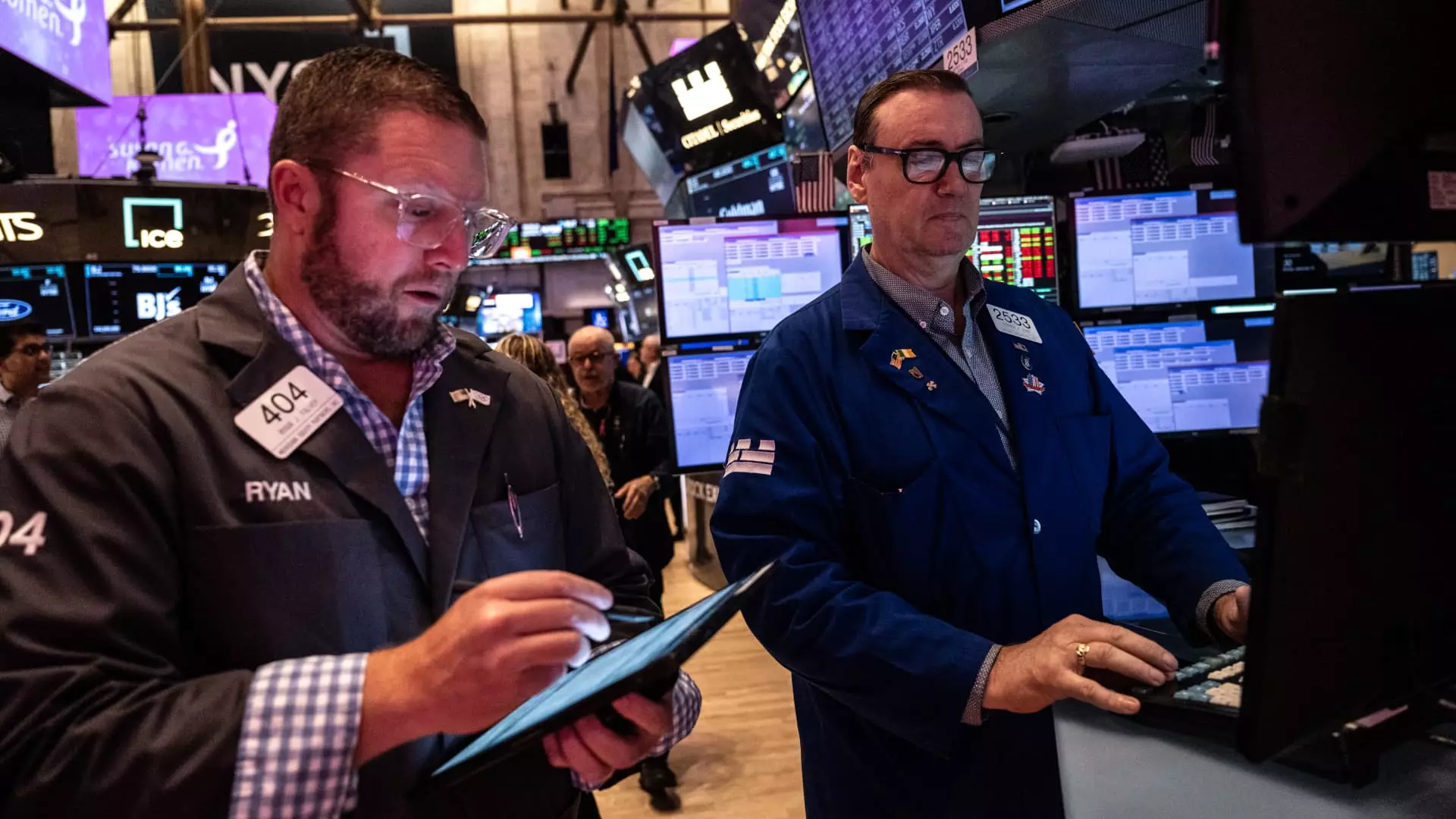The financial landscape has become increasingly turbulent, reflecting shifts in monetary policy and economic trends. Recent activities, especially after the Federal Reserve’s decision to reduce rates by half a percentage point, have stirred significant movements across various sectors. This article endeavors to dissect these occurrences and understand their implications on market behaviors and investor sentiment.
The Federal Reserve’s deliberate adjustment of interest rates serves as a crucial tool in managing the economy. Following the recent announcement, market reactions reverberated across multiple sectors, particularly in real estate and retail. The SPDR S&P Homebuilders ETF (XHB) showcases a notable surge, surpassing previous highs before experiencing slight retracements. Up roughly 10% in one month, this upward trajectory reflects renewed investor confidence in the housing sector. Companies such as Beazer Homes and Hovanian demonstrated remarkable performance, with gains around 17.5% and 16% respectively.
These robust figures suggest that lowered interest rates may enhance mortgage accessibility, stimulating home buying and subsequently, stock prices of housing companies. However, one must remain vigilant; such increases may be fleeting as companies brace for potential market corrections if economic fundamentals do not align with inflated asset valuations.
Evaluating Earnings Reports
Upcoming earning reports for established names like Cracker Barrel and Darden Restaurants, which operates recognizable chains such as Olive Garden and Longhorn Steakhouse, loom large on the horizon. Despite a 6% uptick in Cracker Barrel’s stock within the week, it represents a stark contrast against its 49% decline since the previous December high, prompting questions about consumer behavior and spending in the dining sector.
In comparison, Darden’s relatively stable performance, with a 5% increase over three months, indicates resilience in consumer dining trends, though the stock still stands 9.5% shy of its respective March peak. These indicators suggest a market that is reacting to both the current economic climate and consumer confidence, thus presenting a mixed bag of potential outcomes for investors.
In light of external pressures, the banking sector has experienced a general downturn, with major players like JPMorgan and Goldman Sachs facing significant declines. The recent month of September has seen JPMorgan’s stock drop over 7%, representing a shift in investor sentiment that could be attributed to lingering uncertainties regarding interest rate fluctuations and regulatory changes.
Wells Fargo’s price drop by 12.6% since mid-May further underlines the urgency with which banks are being scrutinized in this volatile environment. These shifts could culminate in broader implications for credit availability and investor risk appetite, indicating a need for cautious optimism among market participants.
As the Federal Reserve slashed rates, an immediate effect could be observed in the Treasury yield curve. Notably, while the yields on 10-year and two-year Treasury notes climbed to 3.7% and 3.62% respectively, shorter-term yields saw a notable decrease. This phenomenon of rising long-term yields paired with falling short-term yields hints at a potential inversion, often interpreted as a harbinger of economic slowdown.
Investors often turn to Treasury bills as a safe haven during turbulent times, and the current yield environment further accentuates this trend. The disparity within the yields could indicate an overarching market anxiety surrounding economic longevity and inflation expectations, suggesting that investor strategies may need recalibrating in response to these shifts.
Investors appear increasingly drawn to gold, viewing it as a secure asset amid uncertainty. Jeffrey Gundlach of DoubleLine Capital opines that gold’s rise may signal a market in accumulation mode, emphasizing its allure as a hedge against fiscal instability. A rising VanEck Gold Miners ETF, evidencing a 5% increase over the past week, encapsulates this evolving narrative, posing both opportunities and challenges for investment strategies moving forward.
Navigating the present financial terrain requires an astute understanding of varied market signals. As the Federal Reserve’s monetary policies take shape, and sectors like banking face downward pressures, investors must adapt by continually analyzing the data, preparing for eventualities that may present both risk and opportunity. The coming days will undoubtedly offer key insights into the health of the economy and stock markets globally, prompting investors to stay vigilant and strategically responsive.


Leave a Reply